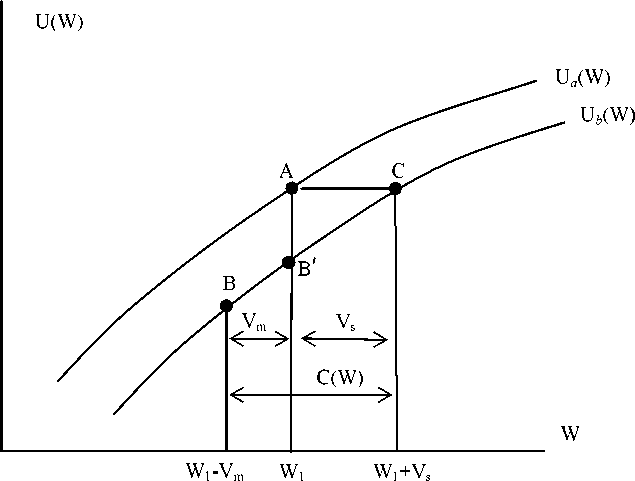lost, the individual’s position moves to point B, on a lower utility level. Since the object is
irreplaceable, it is not possible to move back from point B to point A. Due to the loss, the
individual’s utility is reduced by the amount Ua(W1)-Ub(W1-Vm). The loss can be broken down
into two parts: sentimental value (Vs) and actual monetary loss equal to the market value (Vm) of
the good. The sentimental loss in utility due to moving from state a to state b is shown by the
move from Point A to B'. The monetary loss is shown in moving from the initial wealth level
W1 to W1-Vm or moving from point B' to B. The minimum amount of compensation the owner
is willing to accept for the loss of the irreplaceable good is C(W), which is equal to Vs plus Vm.

Figure 1. The utility effects of an irreplaceable good
Some irreplaceable objects have very little market value. As in the case of this research,
an individual farmer’s records have no market value. The records are only of value to the owner,
More intriguing information
1. Creating a 2000 IES-LFS Database in Stata2. Migrant Business Networks and FDI
3. The name is absent
4. EU enlargement and environmental policy
5. The name is absent
6. The name is absent
7. The name is absent
8. Text of a letter
9. Restructuring of industrial economies in countries in transition: Experience of Ukraine
10. I nnovative Surgical Technique in the Management of Vallecular Cyst